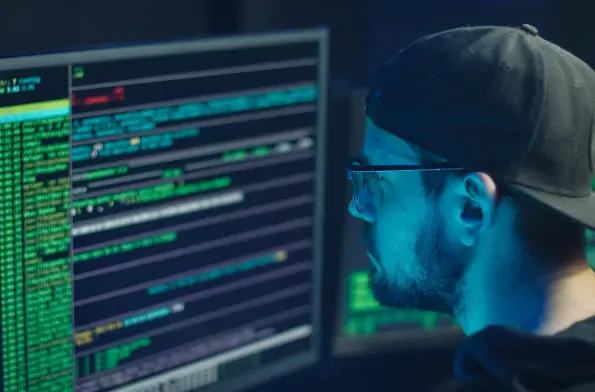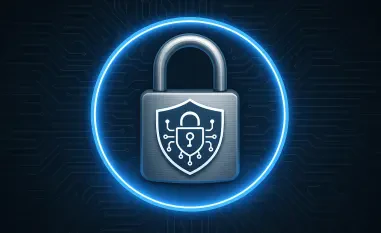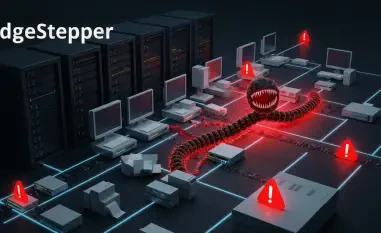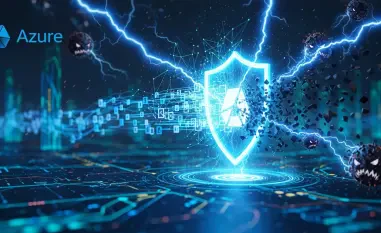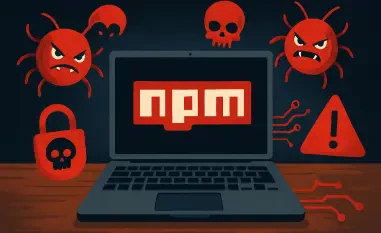In the rapidly shifting landscape of cybersecurity, advanced tools and cutting-edge technologies often dominate the conversation, promising robust defenses against ever-evolving threats. However, the true backbone of any effective security program lies not in the sophistication of firewalls or automated detection systems, but in the capability of the individuals and teams who manage them during high-stakes situations. Picture a state-of-the-art Formula 1 race car—its potential remains untapped without a skilled driver at the wheel. Similarly, even the most advanced security platforms can falter in a crisis if the human element is unprepared. This critical gap between technology and human performance underscores a pressing need to rethink how security validation is approached. By diving into the intersection of tools and team readiness, it becomes clear that preparing people for real-world cyber incidents is just as vital as deploying the latest software, if not more so, in safeguarding organizational integrity.
The haunting specter of a 3 AM emergency call keeps many security leaders awake at night, not solely due to fears of technical breakdowns, but because of the uncertainty surrounding human response under pressure. Will the team identify a critical exposure in time? Can they escalate the issue with precision? Will decision-making hold steady amidst chaos? These lingering questions reveal a fundamental truth: cybersecurity extends far beyond systems and algorithms—it hinges on the ability of individuals to act decisively when stakes are highest. Traditional preparation methods, such as tabletop exercises and crisis simulations, often fall short. Comparable to fire drills, these practices are essential yet insufficient, conducted sporadically due to their high cost and disruptive nature. Such infrequent training raises doubts about whether teams can truly navigate the unpredictability of a genuine cyberattack, leaving dangerous vulnerabilities in organizational defenses that no tool alone can address.
The Evolution of Security Validation
Shifting Focus to Human Performance
Adversarial Exposure Validation (AEV) marks a significant leap forward from traditional Breach and Attack Simulation (BAS), offering a dynamic method to continuously evaluate adversary tactics, techniques, and procedures while mapping probable attack paths. Unlike earlier approaches that primarily tested technical controls, AEV introduces the potential to assess human responses alongside system effectiveness. This means simulating synthetic incidents to gauge whether security analysts can spot critical threats, if incident commanders make sound judgments under duress, and how communication teams manage stakeholder expectations during a crisis. By embedding human performance testing into regular validation cycles, AEV transforms crisis response from a reactive scramble into an instinctive, well-honed skill. This integration ensures that the human element, often the weakest link in high-pressure scenarios, becomes a fortified asset in the broader security framework.
Beyond merely identifying technical vulnerabilities, AEV provides a platform to stress-test the decision-making processes and collaboration dynamics that are crucial during real incidents. When a simulated ransomware attack or insider threat unfolds within the validation environment, the focus shifts to observing how teams prioritize actions, communicate internally, and execute protocols under simulated stress. This approach reveals gaps not just in technology, but in training and coordination—areas that traditional exercises often overlook due to their infrequency. For instance, a security analyst might excel at detecting anomalies in a calm setting, but falter when faced with time-sensitive escalations in a chaotic simulation. Addressing these human-centric weaknesses through AEV allows organizations to refine response strategies continuously, ensuring that when a real breach occurs, the team’s reaction is both swift and effective, minimizing damage and maintaining operational stability.
Maturation of Validation Strategies
The progression from BAS to AEV reflects a broader maturation in cybersecurity thinking, acknowledging that tools like Endpoint Detection and Response (EDR) and Security Information and Event Management (SIEM) systems are only as effective as the people operating them. This evolution prioritizes a holistic view where human readiness is not an afterthought but a core component of validation. By simulating diverse attack scenarios, AEV challenges teams to adapt to unexpected variables, mirroring the unpredictability of actual cyber threats. This shift is critical because even the most robust technological defenses can be undermined by a single misstep in human judgment during a crisis. Incorporating regular human performance assessments into AEV ensures that security teams are not just familiar with their tools, but also adept at leveraging them under pressure, creating a synergy that enhances overall organizational resilience.
Moreover, this matured approach to validation recognizes the need for ongoing improvement rather than static benchmarks. Security landscapes change rapidly, with adversaries constantly refining their methods to exploit both technical and human vulnerabilities. AEV’s continuous validation model, enriched with human testing, allows organizations to stay ahead by regularly updating response protocols based on simulation outcomes. This iterative process helps identify persistent weaknesses in team dynamics or communication chains that might not surface in sporadic, large-scale drills. As a result, security programs evolve into adaptive systems where human and technological elements are equally prioritized, ensuring that neither outpaces the other. This balance is essential for building a defense posture capable of withstanding sophisticated attacks that target the intersection of systems and human behavior.
Bridging the Mobilization Gap
Strengthening the Weakest Link in CTEM
Gartner’s Continuous Threat Exposure Management (CTEM) framework provides a structured approach to cybersecurity through five stages: scoping, discovery, prioritization, validation, and mobilization. While many organizations demonstrate proficiency in the initial four phases, mobilization—where human action, decision-making, and communication come into play under intense stress—often emerges as the most vulnerable stage. This gap can render even the best-validated technical controls ineffective if teams falter when it’s time to act. Integrating human readiness testing into AEV platforms offers a practical solution to this challenge. By simulating high-pressure scenarios that demand rapid response and clear coordination, AEV ensures that teams are not only aware of threats but also equipped to execute mitigation strategies effectively, closing the critical loop in the CTEM cycle.
This focus on mobilization through AEV goes beyond theoretical preparation, targeting the practical skills needed during a real incident. For example, a simulation might test whether a security team can swiftly isolate a compromised system while simultaneously informing relevant stakeholders without causing panic. Such exercises uncover hidden friction points, like delays in escalation or unclear decision hierarchies, which could prove disastrous in a live breach. By addressing these issues within a controlled validation environment, organizations can refine their incident response plans to ensure seamless mobilization. This proactive approach reduces the risk of human error derailing an otherwise robust security posture, transforming a potential liability into a strategic strength that complements technical defenses and aligns with the overarching goals of CTEM.
Scaling Human Readiness for Global Challenges
One of the standout benefits of embedding human testing within AEV is its ability to scale across diverse and globally distributed teams, a necessity in today’s interconnected business environment. Traditional crisis exercises often struggle to accommodate remote or dispersed workforces due to logistical constraints and time zone differences. AEV platforms, however, can deploy targeted simulations that test human responses in varied contexts, ensuring that teams in different regions are equally prepared for localized or cross-border threats. This scalability was vividly demonstrated by the Swiss Federal Department of Foreign Affairs (FDFA), which leveraged Filigran’s AEV platform to reduce crisis exercise preparation time by 80% and conduct weekly simulations across 170 global locations. Such efficiency highlights how human readiness can be prioritized without the burden of resource-intensive drills.
Furthermore, scaling human readiness through AEV fosters a culture of continuous improvement that transcends geographical boundaries. Regular simulations tailored to specific regional risks—such as supply chain attacks in one area or regulatory compliance pressures in another—ensure that all teams develop a nuanced understanding of their unique challenges. This targeted preparation builds confidence in handling crises, whether they stem from local malware outbreaks or international ransomware campaigns. By integrating these exercises into daily workflows, AEV eliminates the disruption associated with traditional training, making readiness an ongoing priority rather than an occasional checkbox. The result is a globally cohesive security posture where human performance matches the sophistication of technical validations, ensuring that no team, regardless of location, becomes a weak point in the defense chain.
Scalable Solutions for Real-World Preparedness
Micro-Drills: Redefining Crisis Training
Instead of depending on infrequent, large-scale tabletop exercises that disrupt operations and strain resources, AEV platforms introduce a transformative alternative through continuous micro-drills. These focused simulations target specific scenarios, such as ransomware attacks or insider threats, allowing security teams to hone critical skills like decision-making and communication in realistic yet manageable settings. Unlike traditional methods that might occur annually and involve entire departments, micro-drills can be conducted frequently with minimal disruption, embedding preparation into routine workflows. This approach ensures that teams remain sharp and responsive, addressing the shortcomings of sporadic training by turning readiness into a consistent practice. The scalability of micro-drills within AEV means that organizations of any size can maintain a high state of alertness without the logistical overhead of conventional exercises.
The precision of micro-drills also allows for tailored learning experiences that address specific vulnerabilities within a team or department. For instance, a simulation might focus on how a particular group handles a phishing escalation, revealing whether protocols are followed or if training gaps exist in recognizing social engineering tactics. By isolating these scenarios, AEV enables organizations to deliver targeted feedback and adjustments, ensuring that each drill builds on the last. This iterative process contrasts sharply with the broad, often unwieldy nature of full-scale exercises, which may dilute focus on critical pain points. As teams engage in these regular, bite-sized challenges, they develop a deeper familiarity with response mechanisms, reducing hesitation and errors when faced with actual threats. This method redefines crisis training as an accessible, ongoing discipline rather than a rare, high-stakes event.
Practice as the Path to Resilience
Consistent exposure to micro-drills through AEV platforms cultivates an intuitive understanding of response protocols, decision-making hierarchies, and communication strategies essential during a cyber incident. This repetition ingrains behaviors that are vital for maintaining composure and effectiveness under pressure, ensuring that teams can act with precision when a breach occurs. Such preparedness is not just about internal efficiency—it’s also about preserving trust with customers, partners, and regulators who expect swift, competent handling of crises. Without regular practice, even well-designed plans can unravel in the heat of the moment, leading to reputational damage and operational setbacks. By prioritizing frequent simulations, organizations build a resilient mindset among teams, equipping them to navigate the complexities of real-world incidents with confidence and integrity.
The tangible impact of this approach is evident in real-world applications, such as the experience of the Swiss Federal Department of Foreign Affairs (FDFA). By adopting Filigran’s AEV platform, FDFA not only slashed preparation time for crisis exercises by a remarkable 80% but also shifted from annual, obligatory drills to a proactive culture of weekly simulations. This transformation empowered globally distributed teams to engage in regular practice, fostering a readiness that traditional methods could never achieve. The outcome was a marked improvement in how teams across 170 locations handled simulated threats, proving that resilience is built through repetition rather than sporadic effort. This example underscores the power of integrating human performance testing into validation cycles, demonstrating that sustained practice turns potential vulnerabilities into strengths, preparing organizations for the inevitable challenges of an evolving threat landscape.
Future Steps for Enhanced Security Posture
Reflecting on the strides made in security validation, it’s evident that past efforts focused heavily on technological advancements, often sidelining the human factor in crisis response. The integration of human readiness testing into frameworks like AEV has already begun to shift this paradigm, emphasizing that people are as critical as systems in defending against cyber threats. Looking back, the adoption of micro-drills and continuous simulations has proven instrumental in addressing the mobilization challenges within CTEM, ensuring teams are not just equipped with tools but also with the skills to use them effectively. These developments have laid a strong foundation for a more balanced approach to cybersecurity, where human performance is no longer an afterthought but a priority.
Moving forward, organizations should consider embedding these human-centric validation practices deeper into their security strategies, exploring ways to customize micro-drills for emerging threats like AI-driven attacks or deepfake scams. Investing in platforms that seamlessly blend technical and human testing will be crucial for staying ahead of adversaries who increasingly exploit human error. Additionally, fostering cross-departmental collaboration during simulations can further enhance mobilization, ensuring that technical teams, legal advisors, and communication units operate as a unified front. By committing to these actionable steps, the cybersecurity community can build on past successes, creating a future where readiness—both human and technological—forms the bedrock of a resilient defense against an ever-changing array of digital dangers.
